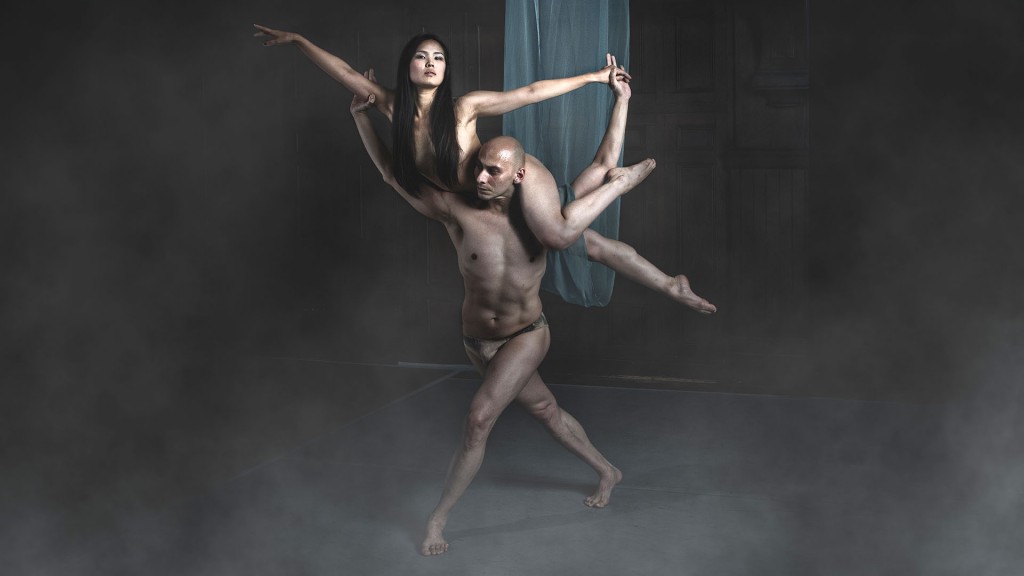Dzul Dance “Wacah Chan” (the snake with two faces) is Part III of the Mayan circus theater’s Tree of Life Trilogy. “Wacah Chan” premieres February 6, 2016, 8pm at El Museo del Barrio 1230 Fifth Avenue (at 104th Street).
Dzul Dance
Dzul Dance is New York City’s Mayan circus theater. This is not Mayan from a book. It’s the real thing. Artistic Director Javier Dzul was a Mayan ritual dancer in the jungles of southern Mexico until he was 16. To meet his family, you take a bus, a truck, and then walk deep into the jungle. Javier Dzul’s personal journey passes from there through Ballet Nacional de Mexico, Ballet Folklorico de Mexico, the Cuban National Ballet, and Martha Graham in New York.
Dzul Dance tells Mexican Mayan stories through circus dance theater with aerialists and contortion. Mayan ritual is often a transformational experience with the body taking on the character of a jungle creature. Body contortion and aerials are a natural fit.
“Dzul tells the Aesop’s Fables of the Americas,” says New York Latin Culture’s Executive Director Ximena Ojeda. Just as Aesop’s Fables tell stories from the beginning of European civilization, Dzul Dance tells stories from the beginning of civilization in the Americas. This is our American heritage.
Dzul Dance News
Compañía Dzul Dance revitaliza en Nueva York la danza ritual maya (Terra Networks)
Javier Dzul explains how one performance of Mayan ritual dance in New York City became Dzul Dance company and reconnected him with the culture of his forefathers.
Dzul Dance Tree of Life Trilogy
The Dzul Dance Tree of Life Trilogy is Part I “Soul of the Maya,” Part II “Kuxan Sum,” Part III “Wacah Chan.”
Soul of the Maya
“Soul of the Maya” explores Mayan beliefs about where souls are created and how souls move through the eternal cycle of life, death, and reincarnation. It premiered December 12, 2015 at El Museo del Barrio in NYC.
The day of the performance, December 12, was the day of the Virgin of Guadalupe, the patron saint of Mexico. Her surprise appearance in the show was inspirational and educational. The day celebrates the day La Virgen de Guadalupe revealed herself in a Marian apparition on a hill outside Mexico City on December 12, 1531. She is a dark-skinned Native American. This inspired a strong connection with the people of Mexico.
It is striking how similar Mayan creation myths are to concepts in molecular biology and quantum physics (the science of small things). The way Dzul dancers move across the stage can represent snakes in the grass or motor proteins in a living cell. The way souls appear, disappear, and mix together mirrors the bizarre quantum world. Somehow the Mayans guessed things that took us another thousand years to learn.
Kuxan Sum
“Kuxan Sum” is the umbilical cord that connects every human being to the three planes of existence: the underworld, earth, and heaven. This dance explores how ancient leaders gained creative power for their people by opening doors between the realms. It premiered January 9, 2016 at El Museo del Barrio in NYC.
Part of the dance tells the story of the arrival of Cortes in what is now Mexico City, and the role played by the Native woman known as “La Malinche” in changing the course of the history of the Americas.
Wacah Chan
“Wacah Chan” is Mayan for the snake with two faces. This dance explores how the cycle of life connects the past, the present, and the future. It asks the existential question of how we hold on to our roots when we live in a completely different culture. Do we hold tightly to the past, let it go completely, or find a way to transform?
Wacah Chan premieres Saturday, February 6, 2016 at 8pm at El Museo del Barrio (Fifth Ave at 104th St).

